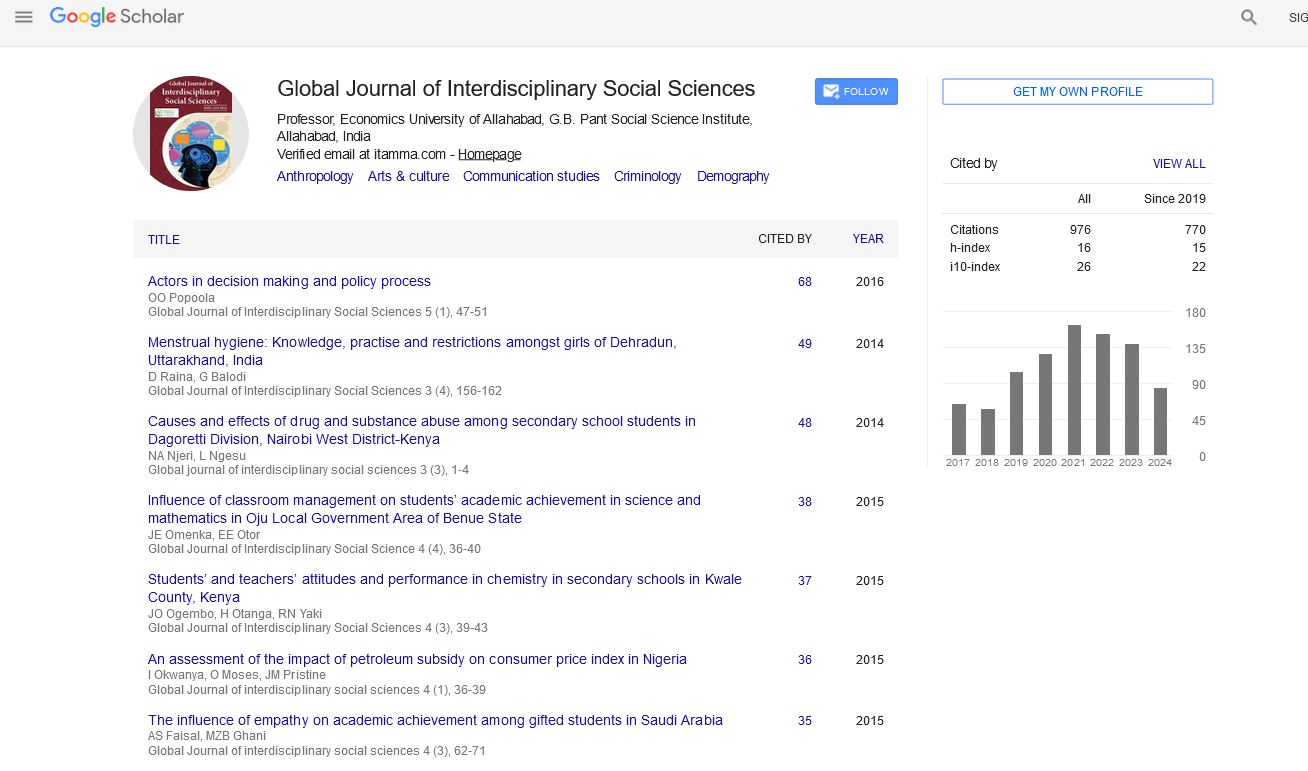Indexed In
- JournalTOCs
- Google Scholar
Useful Links
Share This Page
Journal Flyer

Open Access Journals
- Agri and Aquaculture
- Biochemistry
- Bioinformatics & Systems Biology
- Business & Management
- Chemistry
- Clinical Sciences
- Engineering
- Food & Nutrition
- General Science
- Genetics & Molecular Biology
- Immunology & Microbiology
- Medical Sciences
- Neuroscience & Psychology
- Nursing & Health Care
- Pharmaceutical Sciences
Abstract
Hitherto Unknown Uses of Plants by Indigenous People of Himachal Pradesh
Anju Batta Sehgal
genous people with plantsIa,b. and includes studies such as food, fibre, dyes, tannins, medicinal and other useful plants, harmful plants, taboos and magico-religious beliefs about plants, material use and act of domestication, conservation improvement or destruction of plants. The term ethnobotany, first coined by Harshberger2 1895, encompasses entire studies concerning plants which describes local people’s interaction with the natural environment. Himachal Pradesh, a hilly state in India situated in the North-West Himalaya between latitude 30º-3´ to 33º-3´N and longitude 75º-3´ to 79ºE is considered a veritable emporium of medicinal and aromatic plants and diverse ethnic communities, viz., Gaddis, Gujjars, Kinners, Jads, Lahoulis, Spitians, Pangwalas, Swangalas. There are as many as 16,997 villages of different sizes covering around 55,678 sq kms area under its 12 districts, having altitudinal range between 300-8,000m. Since ages, the rural inhabitants of Himachal Pradesh are considered the inheritors and developers of rich traditions of plants and ecosystem. Another noticeable aspect of the state is that it also boasts of a wide diversity of plant forms of European, Tibetan and Chinese origin in its sub-tropical, temperate, alpine and cold desert regions, and the place is a very fertile area for ethnobotanical research for which the studies so far are a few and fragmentary and needs to be undertaken far ushering in economic prosperity to the people of the state. The study highlights the ethnic uses of 296 plant species belonging to 243 genera under 86 families (medicinal 263 species, edible 133 species, fodder 108 species, ornamental 67 species, sacred 48 species, magico-religious 34 species, fibre 29 species, veterinary ailments 123 species, miscellaneous purposes 84 species; by the rural communities of district Hamirpur, H.P. Of the plants utilized for their sustenance, there are 116 herbs representing 39.189% of the overall diversity, 59 shrubs (19.93%), 88 trees (29.72%), 10 under shrubs (3.37%), and 6 lianas (2.02%) with floristic composition dominated by dicots constituting bulk share of 84.45% representation (250 species, 205 genera, 71 families, followed by monocots 13.51% (40 species, 33 genera, 10 families), gymnosperms 1.01% (3 species, 3 genera, 3 families: Cycas, Pinus Thuja) and pteridophytes 1.01% (3 species, 2 genera, 2 families: Adiantum, Equisetum). Amongst these, the study identifies the use of 175 wild plants, 108 species under cultivation and 13 species as wild and under cultivation.

